"One of the significant sea change circles emerged on the ground in the early years at Esalen. This was years of research, experimentation into radical new systems and healing approaches, think tanks, paths crossing between change makers, and people committed with intense curiosity to developing new ways of transformative thinking, developing new practices in somatic awareness, communication, creativity, therapy, group encounter and learning. Through all its evolutions, changes and challenges, Esalen has remained resilient, adapting to the needs and realities of the times."
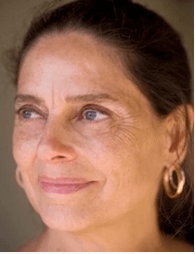
During the 1960s, Daria Halprin joined creative forces with many dynamic teachers who influenced the early years at Esalen. It was a powerful time and Daria, a dancer, teacher, therapist, author and co-founder and director of Tamalpa Institute, was among an intrepid group of change agents—from Fritz Perls to Joseph Campbell—who helped fuel the human potential movement.
Today, as an unpredictable pandemic and civil unrest tilts humanity, the potential to gain insights and regain a sense of lost connection is at the forefront of many hearts and minds.
For Daria, who was scheduled to lead Empowering Creativity Through Movement and Metaphor in August at Esalen before the pandemic shifted many plans, COVID-19 is an opportunity to lean more fully into her work and remind others that movement, dance and the expressive arts are a means of healing, connection with spirit and an opportunity to integrate the lessons being presented to us.
She shares more with Esalen News.
Esalen News: What insights have you discovered during the pandemic?
Daria Halprin: When the full force of the pandemic hit me and I began to realize that life as we knew it was in a process of radical challenge and change, I took the necessary steps I could to sustain Tamalpa Institute and our teachers; three training programs with an international student body had to be taken out of studios and reconfigured online. Students had to be reassured that their learning experience and investment in expressive arts and embodiment practices would continue.
As we moved out of shock and trauma reactions, I could not imagine how studio practices such as ours, centered in somatics, expressive arts and group exchange, could possibly be conveyed and experienced under these circumstances. To my surprise, as we moved into the online world as our only way to stay connected, what has been revealed in an entirely unexpected way is the strong enduring desire that people have to stay connected—to their bodies, emotions, imaginations and to the sense of engaged community.
The power of movement, art and our desire for human connection is far greater than the overwhelming and frightening challenge we are facing. That is what is most needed at this time, if not together in physical person and group, then together/alone we will do it in whatever way is available. Our collective longing to express ourselves creatively, to have a meaningful way to express our emotions together, to move and be moved, has emerged as a shining light of hope and resilience out of this trauma, and the shadow that COVID-19 has revealed.
Where do you feel we, collectively, possess the most strength in creating a sea change as we move forward?
It seems to me that the strength for sea change lies in the momentum created by multiple different collectives all at work and acting on interrelated intentions and holding basic core values. Like each part of the body, each circle has its function, particular energy and resources that, when working in concert together, form the whole body of change. In the field of expressive arts, our strength is in the pedagogy of our practices, in the heart and soul of art itself, and in our determination to make art accessible and available to everyone as a means of individual and community expression, protest and healing.
What “collective” limitation holds us back?
We are afraid to face the shadow and really engage with it honestly and responsibly. When faced with what we don’t understand and can’t control, we tend to fall back on our reactive tendencies. We are limited in our ability and capacity to be with and work with instead of against discomfort.
We are good at covering it up, distracting, denying it, believing it’s the fault of the other, bypassing it, minimizing it and romanticizing it. If there is a silver lining in the trauma of COVID-19, it will be that we face the collective shadow, give up our complacency, our comfort, our privilege and take the difficult action steps we need to address it at its core as well as pay attention to its symptoms.
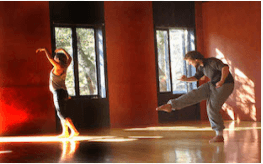
You developed The Life/Art Process®, which bridges body awareness, art expression and psychological processes, with your mother, Anna. What becomes possible when we work with creative intention?
The difficult action steps for change become possible when we hone our intention, when all of the circles of concerned, compassionate collectives work together for the common good. One of the significant sea change circles emerged on the ground in the early years at Esalen.
This was years of research, experimentation into radical new systems and healing approaches, think tanks, paths crossing between change makers, and people committed with intense curiosity to developing new ways of transformative thinking, developing new practices in somatic awareness, communication, creativity, therapy, group encounter and learning.
Through all its evolutions, changes and challenges, Esalen has remained resilient, adapting to the needs and realities of the times. Sustained by the commitment of its friends and faculty, it remains a refuge, a place for people to come together to connect, experiment, renew and consider new perspectives on the living artfully. Honed intention is a tremendous force, for the good and for the destructive. We are seeing both now.
How can your work—turning attention toward the body and implementing movement practices—be valuable during this time?
We are in a collective trauma now. When we are isolated, when our health is at risk, when we are separated from friends, loved ones and a sense of safe environment and movement, when we are anxious about an uncertain present and future, when we feel anxious and helpless, the tendency to disconnect from our bodies intensifies. That’s what we are having to integrate.
The link between body, emotion and mental states is powerful, and when those links become disrupted, as they are now, we lose our resilient life force. Movement and dance are some of the best ways to reconnect and restore those important links. We need activities and experiences—somatic, emotional, imaginative—that keep us resilient. The creative, uplifting, life-affirming, inspiring nature of art and somatic practices provides reconnection and resiliency.
What do you suggest for somebody new to somatic awareness practices?
I think it is very valuable to have a teaching guide. One of the gifts we are seeing right now is the treasure trove of somatic and movement and dance classes that are being offered online. Tamalpa Institute has a wonderful series of online classes that are being offered at low cost and at times of the day when folks from around the world can easily participate.
You have worked with many influential teachers from Esalen’s early years. Are there one or two people whose wisdom stands out right now?
I worked with Fritz Perls and Ida Rolf at Esalen in the 1960s. Fritz said the greatest form of projection is art. He gave me freedom to really dig into psychological life as a theatrical landscape, a stage where every emotion and relationship was welcomed, embodied and could be encountered creatively as well as being felt deeply and struggled with mightily.
My exposure to Fritz and his work shaped my path personally, artistically and professionally. It still does. My image of bodywork with Ida was that she steamrolled me. I was confronted by the amount of pain lodged in my physical body; emotions, memories, fears, sadness, expectations, birth trauma, postural problems.
My body had a hidden life, or a life under the surface, under the dancer’s training, that made it painfully clear that my entire life experience was imprinted in my physical body. The sensitivity of our instrument, the ways in which a movement—a touch, a body ache—is so deeply connected with the whole of who and how we are continues to amaze me.
What do you hope will be our greatest triumph during the pandemic?
Of course, that all the urgently needed social and environmental change we believe in becomes the new reality. And along the way, I think a great triumph will be to persevere, keep moving forward, keep our dreams, hope and care for each other alive in the midst of this dark time.
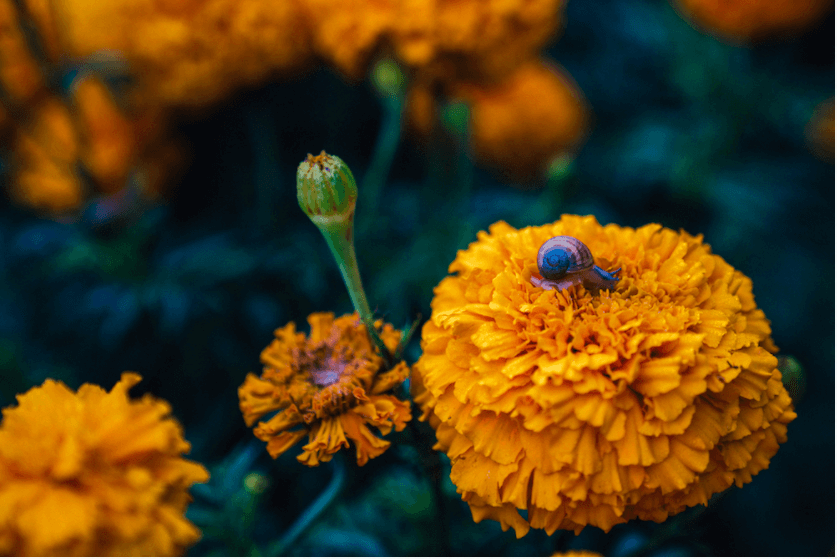
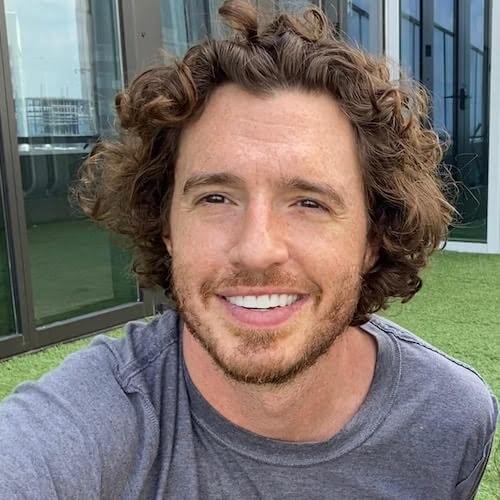
“Remembering to be as self compassionate as I can and praying to the divine that we're all a part of.”
–Aaron
“Prayer, reading, meditation, walking.”
–Karen
“Erratically — which is an ongoing stream of practice to find peace.”
–Charles
“Try on a daily basis to be kind to myself and to realize that making mistakes is a part of the human condition. Learning from our mistakes is a journey. But it starts with compassion and caring. First for oneself.”
–Steve
“Physically: aerobic exercise, volleyball, ice hockey, cycling, sailing. Emotionally: unfortunately I have to work to ‘not care’ about people or situations which may end painfully. Along the lines of ‘attachment is the source of suffering’, so best to avoid it or limit its scope. Sad though because it could also be the source of great joy. Is it worth the risk?“
–Rainer
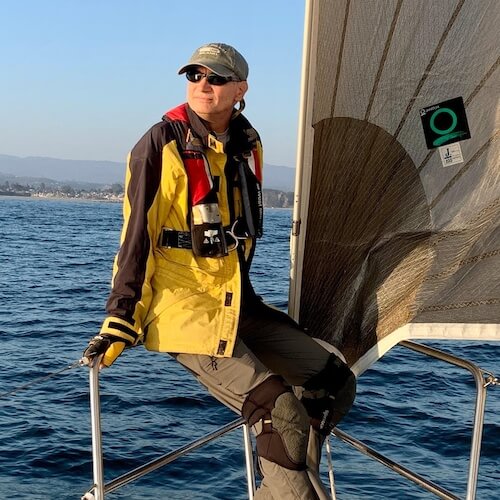

“It's time for my heart to be nurtured on one level yet contained on another. To go easy on me and to allow my feelings to be validated, not judged harshly. On the other hand, to let the heart rule with equanimity and not lead the mind and body around like a master.”
–Suzanne
“I spend time thinking of everything I am grateful for, and I try to develop my ability to express compassion for myself and others without reservation. I take time to do the things I need to do to keep myself healthy and happy. This includes taking experiential workshops, fostering relationships, and participating within groups which have a similar interest to become a more compassionate and fulfilled being.“
–Peter
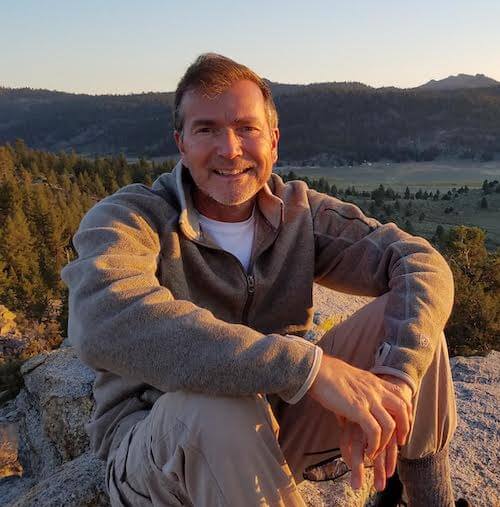
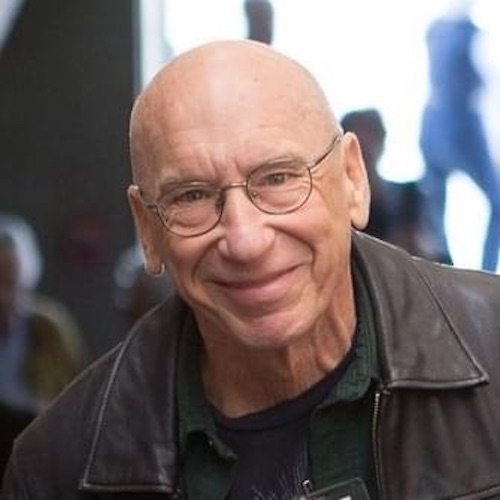
“Self-forgiveness for my own judgments. And oh yeah, coming to Esalen.”
–David B.
“Hmm, this is a tough one! I guess I take care of my heart through fostering relationships with people I feel connected to. Spending quality time with them (whether we're on the phone, through messages/letters, on Zoom, or in-person). Being there for them, listening to them, sharing what's going on with me, my struggles and my successes... like we do in the Esalen weekly Friends of Esalen Zoom sessions!”
–Lori

“I remind myself in many ways of the fact that " Love is all there is!" LOVE is the prize and this one precious life is the stage we get to learn our lessons. I get out into nature, hike, camp, river kayak, fly fish, garden, I create, I dance (not enough!), and I remain grateful for each day, each breath, each moment. Being in the moment, awake, and remembering the gift of life and my feeling of gratitude for all of creation.”
–Steven
“My physical heart by limiting stress and eating a heart-healthy diet. My emotional heart by staying in love with the world and by knowing that all disappointment and loss will pass.“
–David Z.
Today, September 29, is World Heart Day. Strike up a conversation with your own heart and as you feel comfortable, encourage others to do the same. As part of our own transformations and self-care, we sometimes ask for others to illuminate and enliven our hearts or speak our love language.
What if we could do this for ourselves too, even if just for today… or to start a heart practice, forever?
"One of the significant sea change circles emerged on the ground in the early years at Esalen. This was years of research, experimentation into radical new systems and healing approaches, think tanks, paths crossing between change makers, and people committed with intense curiosity to developing new ways of transformative thinking, developing new practices in somatic awareness, communication, creativity, therapy, group encounter and learning. Through all its evolutions, changes and challenges, Esalen has remained resilient, adapting to the needs and realities of the times."

During the 1960s, Daria Halprin joined creative forces with many dynamic teachers who influenced the early years at Esalen. It was a powerful time and Daria, a dancer, teacher, therapist, author and co-founder and director of Tamalpa Institute, was among an intrepid group of change agents—from Fritz Perls to Joseph Campbell—who helped fuel the human potential movement.
Today, as an unpredictable pandemic and civil unrest tilts humanity, the potential to gain insights and regain a sense of lost connection is at the forefront of many hearts and minds.
For Daria, who was scheduled to lead Empowering Creativity Through Movement and Metaphor in August at Esalen before the pandemic shifted many plans, COVID-19 is an opportunity to lean more fully into her work and remind others that movement, dance and the expressive arts are a means of healing, connection with spirit and an opportunity to integrate the lessons being presented to us.
She shares more with Esalen News.
Esalen News: What insights have you discovered during the pandemic?
Daria Halprin: When the full force of the pandemic hit me and I began to realize that life as we knew it was in a process of radical challenge and change, I took the necessary steps I could to sustain Tamalpa Institute and our teachers; three training programs with an international student body had to be taken out of studios and reconfigured online. Students had to be reassured that their learning experience and investment in expressive arts and embodiment practices would continue.
As we moved out of shock and trauma reactions, I could not imagine how studio practices such as ours, centered in somatics, expressive arts and group exchange, could possibly be conveyed and experienced under these circumstances. To my surprise, as we moved into the online world as our only way to stay connected, what has been revealed in an entirely unexpected way is the strong enduring desire that people have to stay connected—to their bodies, emotions, imaginations and to the sense of engaged community.
The power of movement, art and our desire for human connection is far greater than the overwhelming and frightening challenge we are facing. That is what is most needed at this time, if not together in physical person and group, then together/alone we will do it in whatever way is available. Our collective longing to express ourselves creatively, to have a meaningful way to express our emotions together, to move and be moved, has emerged as a shining light of hope and resilience out of this trauma, and the shadow that COVID-19 has revealed.
Where do you feel we, collectively, possess the most strength in creating a sea change as we move forward?
It seems to me that the strength for sea change lies in the momentum created by multiple different collectives all at work and acting on interrelated intentions and holding basic core values. Like each part of the body, each circle has its function, particular energy and resources that, when working in concert together, form the whole body of change. In the field of expressive arts, our strength is in the pedagogy of our practices, in the heart and soul of art itself, and in our determination to make art accessible and available to everyone as a means of individual and community expression, protest and healing.
What “collective” limitation holds us back?
We are afraid to face the shadow and really engage with it honestly and responsibly. When faced with what we don’t understand and can’t control, we tend to fall back on our reactive tendencies. We are limited in our ability and capacity to be with and work with instead of against discomfort.
We are good at covering it up, distracting, denying it, believing it’s the fault of the other, bypassing it, minimizing it and romanticizing it. If there is a silver lining in the trauma of COVID-19, it will be that we face the collective shadow, give up our complacency, our comfort, our privilege and take the difficult action steps we need to address it at its core as well as pay attention to its symptoms.

You developed The Life/Art Process®, which bridges body awareness, art expression and psychological processes, with your mother, Anna. What becomes possible when we work with creative intention?
The difficult action steps for change become possible when we hone our intention, when all of the circles of concerned, compassionate collectives work together for the common good. One of the significant sea change circles emerged on the ground in the early years at Esalen.
This was years of research, experimentation into radical new systems and healing approaches, think tanks, paths crossing between change makers, and people committed with intense curiosity to developing new ways of transformative thinking, developing new practices in somatic awareness, communication, creativity, therapy, group encounter and learning.
Through all its evolutions, changes and challenges, Esalen has remained resilient, adapting to the needs and realities of the times. Sustained by the commitment of its friends and faculty, it remains a refuge, a place for people to come together to connect, experiment, renew and consider new perspectives on the living artfully. Honed intention is a tremendous force, for the good and for the destructive. We are seeing both now.
How can your work—turning attention toward the body and implementing movement practices—be valuable during this time?
We are in a collective trauma now. When we are isolated, when our health is at risk, when we are separated from friends, loved ones and a sense of safe environment and movement, when we are anxious about an uncertain present and future, when we feel anxious and helpless, the tendency to disconnect from our bodies intensifies. That’s what we are having to integrate.
The link between body, emotion and mental states is powerful, and when those links become disrupted, as they are now, we lose our resilient life force. Movement and dance are some of the best ways to reconnect and restore those important links. We need activities and experiences—somatic, emotional, imaginative—that keep us resilient. The creative, uplifting, life-affirming, inspiring nature of art and somatic practices provides reconnection and resiliency.
What do you suggest for somebody new to somatic awareness practices?
I think it is very valuable to have a teaching guide. One of the gifts we are seeing right now is the treasure trove of somatic and movement and dance classes that are being offered online. Tamalpa Institute has a wonderful series of online classes that are being offered at low cost and at times of the day when folks from around the world can easily participate.
You have worked with many influential teachers from Esalen’s early years. Are there one or two people whose wisdom stands out right now?
I worked with Fritz Perls and Ida Rolf at Esalen in the 1960s. Fritz said the greatest form of projection is art. He gave me freedom to really dig into psychological life as a theatrical landscape, a stage where every emotion and relationship was welcomed, embodied and could be encountered creatively as well as being felt deeply and struggled with mightily.
My exposure to Fritz and his work shaped my path personally, artistically and professionally. It still does. My image of bodywork with Ida was that she steamrolled me. I was confronted by the amount of pain lodged in my physical body; emotions, memories, fears, sadness, expectations, birth trauma, postural problems.
My body had a hidden life, or a life under the surface, under the dancer’s training, that made it painfully clear that my entire life experience was imprinted in my physical body. The sensitivity of our instrument, the ways in which a movement—a touch, a body ache—is so deeply connected with the whole of who and how we are continues to amaze me.
What do you hope will be our greatest triumph during the pandemic?
Of course, that all the urgently needed social and environmental change we believe in becomes the new reality. And along the way, I think a great triumph will be to persevere, keep moving forward, keep our dreams, hope and care for each other alive in the midst of this dark time.


“Remembering to be as self compassionate as I can and praying to the divine that we're all a part of.”
–Aaron
“Prayer, reading, meditation, walking.”
–Karen
“Erratically — which is an ongoing stream of practice to find peace.”
–Charles
“Try on a daily basis to be kind to myself and to realize that making mistakes is a part of the human condition. Learning from our mistakes is a journey. But it starts with compassion and caring. First for oneself.”
–Steve
“Physically: aerobic exercise, volleyball, ice hockey, cycling, sailing. Emotionally: unfortunately I have to work to ‘not care’ about people or situations which may end painfully. Along the lines of ‘attachment is the source of suffering’, so best to avoid it or limit its scope. Sad though because it could also be the source of great joy. Is it worth the risk?“
–Rainer


“It's time for my heart to be nurtured on one level yet contained on another. To go easy on me and to allow my feelings to be validated, not judged harshly. On the other hand, to let the heart rule with equanimity and not lead the mind and body around like a master.”
–Suzanne
“I spend time thinking of everything I am grateful for, and I try to develop my ability to express compassion for myself and others without reservation. I take time to do the things I need to do to keep myself healthy and happy. This includes taking experiential workshops, fostering relationships, and participating within groups which have a similar interest to become a more compassionate and fulfilled being.“
–Peter


“Self-forgiveness for my own judgments. And oh yeah, coming to Esalen.”
–David B.
“Hmm, this is a tough one! I guess I take care of my heart through fostering relationships with people I feel connected to. Spending quality time with them (whether we're on the phone, through messages/letters, on Zoom, or in-person). Being there for them, listening to them, sharing what's going on with me, my struggles and my successes... like we do in the Esalen weekly Friends of Esalen Zoom sessions!”
–Lori

“I remind myself in many ways of the fact that " Love is all there is!" LOVE is the prize and this one precious life is the stage we get to learn our lessons. I get out into nature, hike, camp, river kayak, fly fish, garden, I create, I dance (not enough!), and I remain grateful for each day, each breath, each moment. Being in the moment, awake, and remembering the gift of life and my feeling of gratitude for all of creation.”
–Steven
“My physical heart by limiting stress and eating a heart-healthy diet. My emotional heart by staying in love with the world and by knowing that all disappointment and loss will pass.“
–David Z.
Today, September 29, is World Heart Day. Strike up a conversation with your own heart and as you feel comfortable, encourage others to do the same. As part of our own transformations and self-care, we sometimes ask for others to illuminate and enliven our hearts or speak our love language.
What if we could do this for ourselves too, even if just for today… or to start a heart practice, forever?
"One of the significant sea change circles emerged on the ground in the early years at Esalen. This was years of research, experimentation into radical new systems and healing approaches, think tanks, paths crossing between change makers, and people committed with intense curiosity to developing new ways of transformative thinking, developing new practices in somatic awareness, communication, creativity, therapy, group encounter and learning. Through all its evolutions, changes and challenges, Esalen has remained resilient, adapting to the needs and realities of the times."

During the 1960s, Daria Halprin joined creative forces with many dynamic teachers who influenced the early years at Esalen. It was a powerful time and Daria, a dancer, teacher, therapist, author and co-founder and director of Tamalpa Institute, was among an intrepid group of change agents—from Fritz Perls to Joseph Campbell—who helped fuel the human potential movement.
Today, as an unpredictable pandemic and civil unrest tilts humanity, the potential to gain insights and regain a sense of lost connection is at the forefront of many hearts and minds.
For Daria, who was scheduled to lead Empowering Creativity Through Movement and Metaphor in August at Esalen before the pandemic shifted many plans, COVID-19 is an opportunity to lean more fully into her work and remind others that movement, dance and the expressive arts are a means of healing, connection with spirit and an opportunity to integrate the lessons being presented to us.
She shares more with Esalen News.
Esalen News: What insights have you discovered during the pandemic?
Daria Halprin: When the full force of the pandemic hit me and I began to realize that life as we knew it was in a process of radical challenge and change, I took the necessary steps I could to sustain Tamalpa Institute and our teachers; three training programs with an international student body had to be taken out of studios and reconfigured online. Students had to be reassured that their learning experience and investment in expressive arts and embodiment practices would continue.
As we moved out of shock and trauma reactions, I could not imagine how studio practices such as ours, centered in somatics, expressive arts and group exchange, could possibly be conveyed and experienced under these circumstances. To my surprise, as we moved into the online world as our only way to stay connected, what has been revealed in an entirely unexpected way is the strong enduring desire that people have to stay connected—to their bodies, emotions, imaginations and to the sense of engaged community.
The power of movement, art and our desire for human connection is far greater than the overwhelming and frightening challenge we are facing. That is what is most needed at this time, if not together in physical person and group, then together/alone we will do it in whatever way is available. Our collective longing to express ourselves creatively, to have a meaningful way to express our emotions together, to move and be moved, has emerged as a shining light of hope and resilience out of this trauma, and the shadow that COVID-19 has revealed.
Where do you feel we, collectively, possess the most strength in creating a sea change as we move forward?
It seems to me that the strength for sea change lies in the momentum created by multiple different collectives all at work and acting on interrelated intentions and holding basic core values. Like each part of the body, each circle has its function, particular energy and resources that, when working in concert together, form the whole body of change. In the field of expressive arts, our strength is in the pedagogy of our practices, in the heart and soul of art itself, and in our determination to make art accessible and available to everyone as a means of individual and community expression, protest and healing.
What “collective” limitation holds us back?
We are afraid to face the shadow and really engage with it honestly and responsibly. When faced with what we don’t understand and can’t control, we tend to fall back on our reactive tendencies. We are limited in our ability and capacity to be with and work with instead of against discomfort.
We are good at covering it up, distracting, denying it, believing it’s the fault of the other, bypassing it, minimizing it and romanticizing it. If there is a silver lining in the trauma of COVID-19, it will be that we face the collective shadow, give up our complacency, our comfort, our privilege and take the difficult action steps we need to address it at its core as well as pay attention to its symptoms.

You developed The Life/Art Process®, which bridges body awareness, art expression and psychological processes, with your mother, Anna. What becomes possible when we work with creative intention?
The difficult action steps for change become possible when we hone our intention, when all of the circles of concerned, compassionate collectives work together for the common good. One of the significant sea change circles emerged on the ground in the early years at Esalen.
This was years of research, experimentation into radical new systems and healing approaches, think tanks, paths crossing between change makers, and people committed with intense curiosity to developing new ways of transformative thinking, developing new practices in somatic awareness, communication, creativity, therapy, group encounter and learning.
Through all its evolutions, changes and challenges, Esalen has remained resilient, adapting to the needs and realities of the times. Sustained by the commitment of its friends and faculty, it remains a refuge, a place for people to come together to connect, experiment, renew and consider new perspectives on the living artfully. Honed intention is a tremendous force, for the good and for the destructive. We are seeing both now.
How can your work—turning attention toward the body and implementing movement practices—be valuable during this time?
We are in a collective trauma now. When we are isolated, when our health is at risk, when we are separated from friends, loved ones and a sense of safe environment and movement, when we are anxious about an uncertain present and future, when we feel anxious and helpless, the tendency to disconnect from our bodies intensifies. That’s what we are having to integrate.
The link between body, emotion and mental states is powerful, and when those links become disrupted, as they are now, we lose our resilient life force. Movement and dance are some of the best ways to reconnect and restore those important links. We need activities and experiences—somatic, emotional, imaginative—that keep us resilient. The creative, uplifting, life-affirming, inspiring nature of art and somatic practices provides reconnection and resiliency.
What do you suggest for somebody new to somatic awareness practices?
I think it is very valuable to have a teaching guide. One of the gifts we are seeing right now is the treasure trove of somatic and movement and dance classes that are being offered online. Tamalpa Institute has a wonderful series of online classes that are being offered at low cost and at times of the day when folks from around the world can easily participate.
You have worked with many influential teachers from Esalen’s early years. Are there one or two people whose wisdom stands out right now?
I worked with Fritz Perls and Ida Rolf at Esalen in the 1960s. Fritz said the greatest form of projection is art. He gave me freedom to really dig into psychological life as a theatrical landscape, a stage where every emotion and relationship was welcomed, embodied and could be encountered creatively as well as being felt deeply and struggled with mightily.
My exposure to Fritz and his work shaped my path personally, artistically and professionally. It still does. My image of bodywork with Ida was that she steamrolled me. I was confronted by the amount of pain lodged in my physical body; emotions, memories, fears, sadness, expectations, birth trauma, postural problems.
My body had a hidden life, or a life under the surface, under the dancer’s training, that made it painfully clear that my entire life experience was imprinted in my physical body. The sensitivity of our instrument, the ways in which a movement—a touch, a body ache—is so deeply connected with the whole of who and how we are continues to amaze me.
What do you hope will be our greatest triumph during the pandemic?
Of course, that all the urgently needed social and environmental change we believe in becomes the new reality. And along the way, I think a great triumph will be to persevere, keep moving forward, keep our dreams, hope and care for each other alive in the midst of this dark time.


“Remembering to be as self compassionate as I can and praying to the divine that we're all a part of.”
–Aaron
“Prayer, reading, meditation, walking.”
–Karen
“Erratically — which is an ongoing stream of practice to find peace.”
–Charles
“Try on a daily basis to be kind to myself and to realize that making mistakes is a part of the human condition. Learning from our mistakes is a journey. But it starts with compassion and caring. First for oneself.”
–Steve
“Physically: aerobic exercise, volleyball, ice hockey, cycling, sailing. Emotionally: unfortunately I have to work to ‘not care’ about people or situations which may end painfully. Along the lines of ‘attachment is the source of suffering’, so best to avoid it or limit its scope. Sad though because it could also be the source of great joy. Is it worth the risk?“
–Rainer


“It's time for my heart to be nurtured on one level yet contained on another. To go easy on me and to allow my feelings to be validated, not judged harshly. On the other hand, to let the heart rule with equanimity and not lead the mind and body around like a master.”
–Suzanne
“I spend time thinking of everything I am grateful for, and I try to develop my ability to express compassion for myself and others without reservation. I take time to do the things I need to do to keep myself healthy and happy. This includes taking experiential workshops, fostering relationships, and participating within groups which have a similar interest to become a more compassionate and fulfilled being.“
–Peter


“Self-forgiveness for my own judgments. And oh yeah, coming to Esalen.”
–David B.
“Hmm, this is a tough one! I guess I take care of my heart through fostering relationships with people I feel connected to. Spending quality time with them (whether we're on the phone, through messages/letters, on Zoom, or in-person). Being there for them, listening to them, sharing what's going on with me, my struggles and my successes... like we do in the Esalen weekly Friends of Esalen Zoom sessions!”
–Lori

“I remind myself in many ways of the fact that " Love is all there is!" LOVE is the prize and this one precious life is the stage we get to learn our lessons. I get out into nature, hike, camp, river kayak, fly fish, garden, I create, I dance (not enough!), and I remain grateful for each day, each breath, each moment. Being in the moment, awake, and remembering the gift of life and my feeling of gratitude for all of creation.”
–Steven
“My physical heart by limiting stress and eating a heart-healthy diet. My emotional heart by staying in love with the world and by knowing that all disappointment and loss will pass.“
–David Z.
Today, September 29, is World Heart Day. Strike up a conversation with your own heart and as you feel comfortable, encourage others to do the same. As part of our own transformations and self-care, we sometimes ask for others to illuminate and enliven our hearts or speak our love language.
What if we could do this for ourselves too, even if just for today… or to start a heart practice, forever?